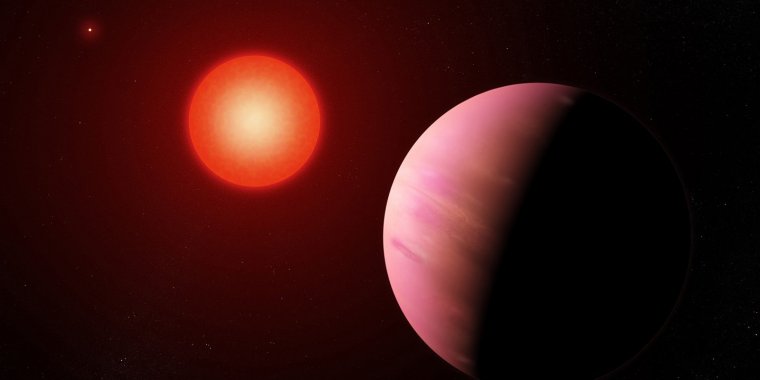| News / Space News |
Citizen Scientists Find New World with NASA Telescope
Using data from NASA's Kepler space telescope, citizen scientists have discovered a planet roughly twice the size of Earth located within its star's habitable zone, the range of orbital distances where liquid water may exist on the planet's surface.

The newfound planet K2-288Bb, illustrated here, is slightly smaller than Neptune. Located about 226 light-years away, it orbits the fainter member of a pair of cool M-type stars every 31.3 days. Credit: NASA's Goddard Space Flight Center/Francis Reddy
The new world, known as K2-288Bb, could be rocky or could be a gas-rich planet similar to Neptune. Its size is rare among exoplanets - planets beyond our solar system.
Located 226 light-years away in the constellation Taurus, the planet lies in a stellar system known as K2-288, which contains a pair of dim, cool M-type stars separated by about 5.1 billion miles (8.2 billion kilometers) - roughly six times the distance between Saturn and the Sun.
The brighter star is about half as massive and large as the Sun, while its companion is about one-third the Sun's mass and size. The new planet, K2-288Bb, orbits the smaller, dimmer star every 31.3 days.
The team began follow-up observations using NASA's Spitzer Space Telescope, the Keck II telescope at the W. M. Keck Observatory and NASA's Infrared Telescope Facility (the latter two in Hawaii), and also examined data from ESA's (the European Space Agency's) Gaia mission.
Estimated to be about 1.9 times Earth's size, K2-288Bb is half the size of Neptune. This places the planet within a recently discovered category called the Fulton gap, or radius gap. Among planets that orbit close to their stars, there's a curious dearth of worlds between about 1.5 and two times Earth's size.
This is likely the result of intense starlight breaking up atmospheric molecules and eroding away the atmospheres of some planets over time, leaving behind two populations. Since K2-288Bb's radius places it in this gap, it may provide a case study of planetary evolution within this size range. (NASA)
YOU MAY ALSO LIKE





